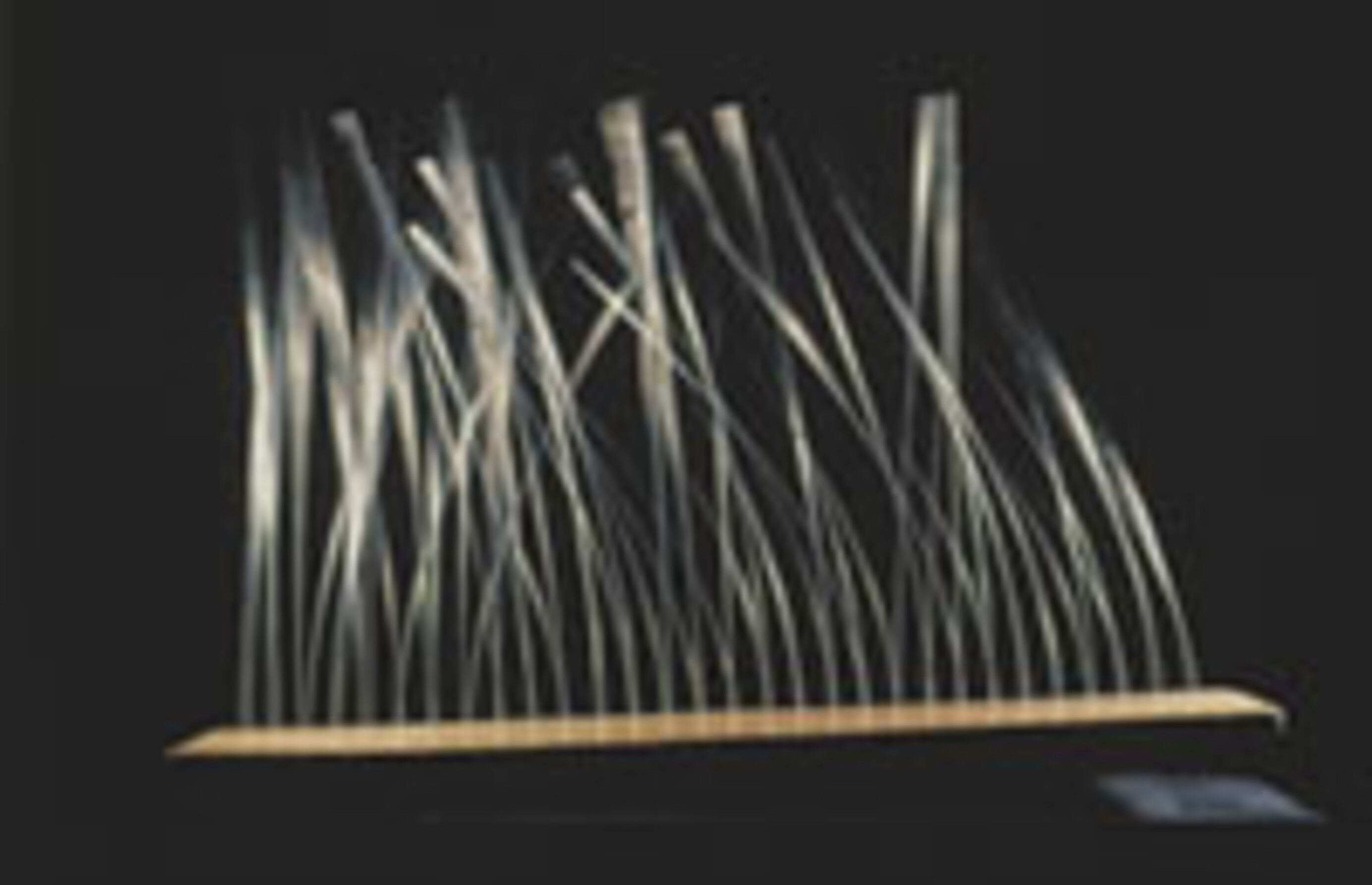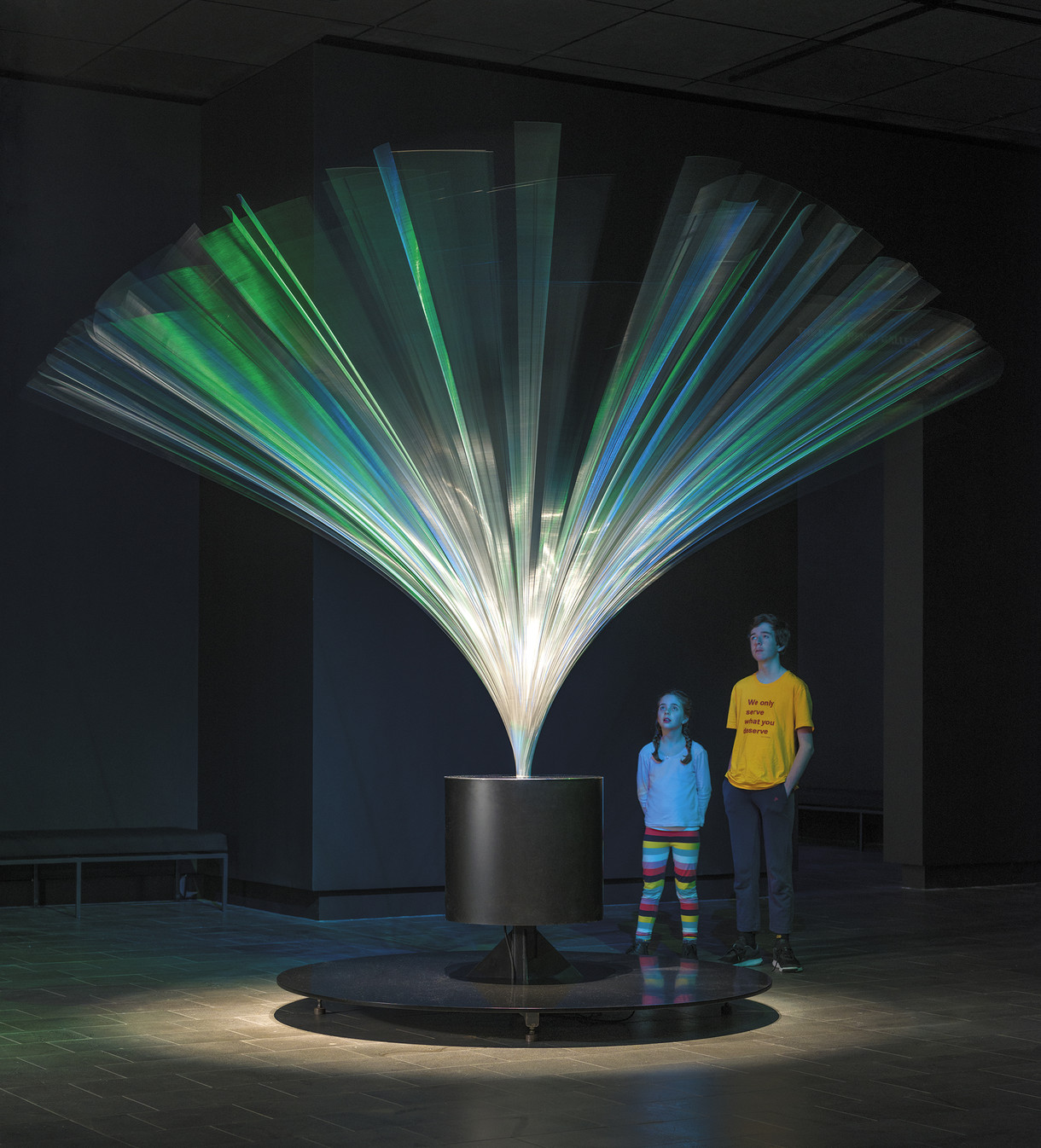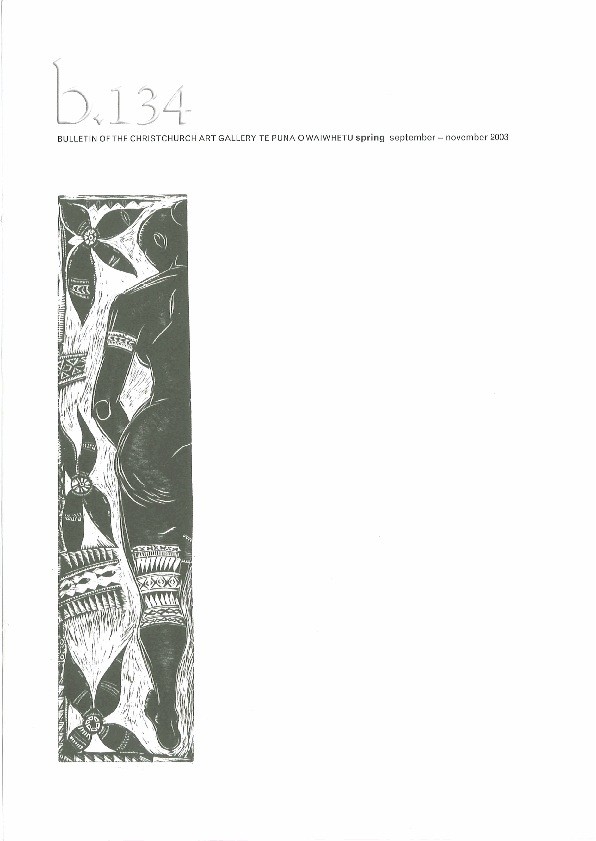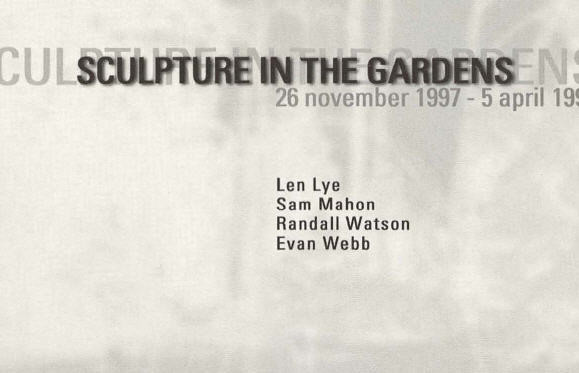This exhibition is now closed
Len Lye: The Total Artwork
5 September –
23 November 2003

Len Lye Grass 1961. Stainless steel on wood base with motor. Len Lye Foundation collection, Govett-Brewster Art Gallery
Celebrates the centenary of one of New Zealand's most inventive artists.
'You know what: the story is to let the old brain wander its words... out comes a lot of junk but now and then may come one beaut arrangement well worth nudging it to feel like freedom. When messing with metal out may come a fig of mote for motion. A sometime figure of motion are you ready press the button. In utter beatitude, to swoosh!'
Len Lye (1901–1980) was a filmmaker, kinetic sculptor, painter, doodler, genetic theorist and experimental prose writer. His view of the ‘total artwork' was one that encompassed movement, light and the emanation of the life force. Throughout his remarkable career, Len Lye never stopped thinking inventively about the creative process.
Lye was born in Christchurch and grew up in Wellington, returning to Christchurch in 1919 to study briefly under Archibald Nicoll at the Canterbury College of Art. He left New Zealand in 1921 and spent time in Australia where he learnt basic animation techniques. He visited numerous Pacific Islands and lived among the villagers in Western Samoa. He briefly returned to Sydney in 1925 before embarking to England in 1926. While living in England, Lye became acquainted with avant-garde artists and writers and became a member of the 7 and 5 Society, exhibiting regularly with them until 1934. He came into contact with a number of art movements such as surrealism, abstract expressionism and European kineticism. Lye moved to New York in 1944 where he died in 1980.
This touring exhibition, a joint venture of the Govett-Brewster Art Gallery, New Plymouth and the Art Gallery of New South Wales to commemorate the centenary of Lye's birth, includes a significant selection of Lye's films, photo-grams and kinetic sculptures. Eighteen short films including Tusalava (1929), Rainbow Dance (1936) and Free Radicals (1979), rare photo-grams dating from 1947 and three kinetic sculptures Universe (1963–76), Roundhead (1959) and Grass (1961) are included in the exhibition.
Best known as a filmmaker, Lye pioneered cartoon animation and the technique of painting or scratching patterns directly onto film. His experimental film work, both witty and whimsical, reveals many underlying interests of the artist and is a remarkable achievement in the history of film making. He achieved inventive effects through developing processes of colour printing, jump-cutting, stop-frame animation and synchronising visuals with music. Tusalava (1929) was influenced by Māori and Aboriginal art and in particular the witchetty grub, a source of food for the Aboriginal people. The shapes inherent to much of Lye's direct animation and paintings are derived from dots and indigenous tapa patterns. His enduring fascination for and extensive studies of Pacific imagery, rhythms, myths and legends was translated into many of his paintings, films and theories of art.
A large quantity of Lye's photo-grams feature friends and acquaintances such as Georgia O'Keefe, Le Corbusier and W.H. Auden and were made in New York. These photo-grams acted as an extension of his interests in stencils, a method he often used in his animated films. Lye's first kinetic sculptures date from when he was a student in Wellington, but it was not until 1961 at the age of 57 that he turned seriously to the creation of dramatic, large scale kinetic sculpture. These steel motion compositions articulate Lye's irrepressible addiction to movement. Their kinetic actions and sounds, visual relationship with line and loop and his empathy with the rhythms of the body and dance, continue to fascinate audiences worldwide.
Lye's reputation as one of the most important of kinetic sculptors internationally has continued to grow and his film work still exerts an influence in New Zealand popular culture. This touring exhibition presents a rare opportunity to experience first-hand the work of one of New Zealand's most inventive of artists.
Exhibition number: 706








